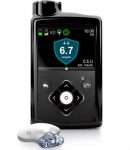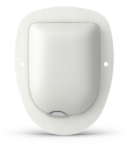We’re talking about a closed-loop system which ties your CGM and insulin pump together so that it decreases or increases insulin flow as required to help maintain your target glucose levels. Not all pumps can do this.
All this discussion is written with the Australian environment in mind.
This document was current as of July 2022.
Terminology
Closed-loop systems are officially referred to as Automated Insulin Delivery (AID) systems.
Historically some systems have used the APS (Artificial Pancreas System) moniker, however today that term implies something that’s more of a pancreas replacement. Such as dual-hormone (insulin + glucagon) systems like the BetaBionics iLet.
“Looping” is a verb that usually refers to someone using an open-source AID system. One of the systems is called “Loop”, which does introduce confusion for many people. People using the other open systems are definitely also “loopers”. Some users of the commercial systems also think of themselves as loopers, although the definitions there seem a little murkier.
Commercial choices
If you want a commercial AID system, at the moment you could use the Medtronic or Tandem systems.

Medtronic 780G (or the older 770G or 670G). Note that these are dependent on Medtronic’s own CGM. But it is commercially supported. The 780G has a few improvements over the 770G/670G’s early algorithm.
 The Tandem t:slim X2 has the “Control-IQ” firmware option with something similar.
The Tandem t:slim X2 has the “Control-IQ” firmware option with something similar.
Without Control-IQ, the t:slim is available in Australia with the Basal-IQ (low-glucose-suspend) firmware. That’s usually not seen as having enough automation of the insulin delivery to qualify as an AID system.
DIY choices
Or you might decide to build your own open source loop system using a compatible pump, and start looping now.
These are currently “class-leading” in terms of features compared to the commercial offerings we know about. But you need to take on responsibility for building and running the system yourself.
Because you need to do this yourself (for legal reasons) it’s generally referred to as “DIY”. Although that brings connotations in some people’s minds of someone inventing a new un-tested system from scratch and having it held together with BluTac and string, that’s not how it usually works. We build these systems on top of the work of thousands of other people around the world.
DIY Support
Because they are not regulated systems approved by the TGA as medical devices, you can’t purchase these loop systems or have them provided as systems by others. Legally you must build it for your own use. But there are large and active communities of other people who have done it for themselves and can help you to do the same. Such as the “Aussie, Aussie, Aussie, Loop, Loop, LOOP!” group on Facebook.
For medical practitioners to suggest the use of such systems (they couldn’t provide it for you) they would be going “off-label” somewhat. But the tools of the insulin, the pump, the CGM, and how your body responds to them are things that your medical team should still support you using. As per the 2018 Diabetes Australia position statement on DIY technologies:
[…] there will always be some people who accept a level of risk and choose to take the DIY approach. These people should continue to receive support and care from their diabetes healthcare professional and the health system.
Just don’t go to your doctor and ask them how to set it up.
The choice of open source AID system keeps gradually expanding. Each has different features and pump choices:
- OpenAPS runs on a pocket Linux “rig” computer.
- Loop runs on iPhones.
- AndroidAPS runs on an Android device (even if it doesn’t have a SIM or network connection).
- FreeAPS X runs on iPhones.
OpenAPS and AndroidAPS use the OpenAPS “oref” algorithms, as does FreeAPS X (which otherwise uses the same pump-comms framework as Loop).
But for now this is mainly an overview of the pump choices without going into all the ins and outs of each system.
CGM choice
All of the following systems can be used with Dexcom G5 and G6 as well as Libre (when combined with MiaoMiao/Nightrider/Bubble/Droplet/etc devices) CGMs. The pump itself doesn’t have to talk to the CGM: the AID controller does that.
Libre2 support is a bit harder at the moment, although the Diabox app for Android has some options there.
It is possible (but not convenient) to use Medtronic’s Guardian2/Guardian3 CGM (as used on the 640G/670G pumps) to drive a loop, but that involves carrying a lot of extra hardware (including the Medtronic pump as receiver). It can even be done using the 770G/780G pumps as CGM receivers, although the CGM data has to be bounced off Medtronic’s CareLink servers, and this dependency on Internet service does not make for a robust/reliable system.
If you use a Medtronic 522/722/554/754/523/723 pump and OpenAPS or Loop (see below), you have the option of using Medtronic’s old CGM that links to those pumps (using a “MiniLink” transmitter). But most people prefer the Dexcom CGMs.
Pump choices – in-warranty

People with existing Combo pumps can of course start looping if they want, although Australian sales of this pump ceased in September 2021. I started using a Combo (specifically for looping) in 2018, and it’s a solid pump. These pumps have warranty for 4 years from their new purchase date.
 The Omnipod DASH system was introduced into Australia in 2021, although it is expensive. These can be used with AndroidAPS in an AID system. They also work with the “dev” branches of Loop and FreeAPS X, although until that progresses into the release version that code is experimental.
The Omnipod DASH system was introduced into Australia in 2021, although it is expensive. These can be used with AndroidAPS in an AID system. They also work with the “dev” branches of Loop and FreeAPS X, although until that progresses into the release version that code is experimental.
 The DANA-i is available new. It was added to the Prostheses List in July.
The DANA-i is available new. It was added to the Prostheses List in July.
 The DANA RS can also be used with AndroidAPS. However Australian sales of this pump ceased a while back (some may still be under warranty).
The DANA RS can also be used with AndroidAPS. However Australian sales of this pump ceased a while back (some may still be under warranty).
Pump choices – without warranty
Or you can decide to use an older out-of-warranty pump. Either second-hand, or your own old pump from your cupboard.
- The Accu-Chek Combo, just as above with in-warranty pumps. It works with AndroidAPS.

- DANA R, and DANA RS both work with AndroidAPS.

- The Medtronic Paradigm (515/715/522/722) or Veo (554/754, with firmware version 2.7A or earlier) can be used with OpenAPS, AndroidAPS, FreeAPS X, or Loop. Note that Veo pumps with firmware 2.7B or later can not be used for looping.
The older Medtronic Paradigm 512/712 pumps can also be used with AndroidAPS and OpenAPS.

- If you manage to find an American Medtronic Paradigm Revel (523/723) with firmware 2.4A or earlier you can use that with OpenAPS, AndroidAPS, FreeAPS X, or Loop too.
Do note however that the radio communications with the Medtronic Paradigm pumps are very exposed to cybersecurity risks. The OpenAPS “rigs” generally have the required radio integrated, but with the other systems to use a Paradigm pump you will need to carry a RileyLink, EmaLink, or OrangeLink Bluetooth->pump radio bridge.
Older pods
As mentioned, the DASH is sold and supported within Australia (don’t expect Insulet to provide support for your looping though: that’s up to you. But there’s an earlier version of Omnipod: Eros.
 A few people have been able to arrange themselves a prescription from an overseas doctor for the older “Eros” OmniPods and then have friends or family in that country ship boxes of new pods to Australia. That falls under the allowed importation-for-personal-use rules. They then use these with either AndroidAPS, FreeAPS X, or Loop using a Riley/Ema/OrangeLink radio bridge. The pods can still get expensive though.
A few people have been able to arrange themselves a prescription from an overseas doctor for the older “Eros” OmniPods and then have friends or family in that country ship boxes of new pods to Australia. That falls under the allowed importation-for-personal-use rules. They then use these with either AndroidAPS, FreeAPS X, or Loop using a Riley/Ema/OrangeLink radio bridge. The pods can still get expensive though.
Also note that some serious cybersecurity flaws in the Eros protocol were published in late 2021. These do not seem to apply to the DASH protocol.
Not loopable
 If you have a Medtronic 640G/670G/770G/780G, these can not be used with any open source AID system. You can use them with AndroidAPS in “open loop” mode, where the software continually gives you instructions on what to set on the pump, but the software cannot control the pump directly. This can be a useful transition step when first setting up AndroidAPS of course.
If you have a Medtronic 640G/670G/770G/780G, these can not be used with any open source AID system. You can use them with AndroidAPS in “open loop” mode, where the software continually gives you instructions on what to set on the pump, but the software cannot control the pump directly. This can be a useful transition step when first setting up AndroidAPS of course.
 The same applies to the Tandem t:slim X2, the Accu-Chek Solo, and the current version of the YpsoPump.
The same applies to the Tandem t:slim X2, the Accu-Chek Solo, and the current version of the YpsoPump.
What’s coming?
CamAPS FX is a system that has supported the DANA RS and DANA-i pumps on a subscription-based system (not in Australia) for a while. It runs as an app on an Android phone, and integrates with a Dexcom G6 CGM.
It’s shortly going to arrive in Australia (it was approved by the TGA in June 2022), apparently included with the impending update to the YpsoPump. I’m expecting announcements by early August.
Insulet have their OmniPod 5 (used to be called “Horizon”) which recently got FDA approval to supply in the US. This may eventually reach other countries including Australia as well.
Diabeloop is a French company with European approval for its system, using a growing set of pumps. It has a locked-down controller device talking to a Dexcom CGM, and works with at least: Kaleido “patch” pumps, the Accu-Chek Insight, and the DANA-i. We will continue to watch its development in Europe, but it’s hard to imagine any Australian deployment at the moment. It will also be used in Japan with the MEDISAFE WITH pump.
In a strange twist CamAPS FX seems to be their hybrid closed-loop system, while CamAPS HX is being used in trials as a “fully-closed” loop system (without announcing meals/etc). I would have thought the “F” and “H” would be the other way around, but whatever.
Tidepool is a US company who has forked off a version of the opensource Loop system (which runs on iPhones) and is applying for FDA approval to use it with Bluetooth LE enabled pumps. Their first target seems to be the Omnipod DASH pumps. Presumably they are also intending to work with other BLE pumps over time.
Lots of development is continuing in the opensource projects, although there are rarely timeframes on expected results. It might take months, years, or some of these might not eventuate. But I’m aware of work being done to add support for more Bluetooth-enabled pumps to all the systems. The YpsoPump is on this list (once their “Dose” upgrade is released).
But for now the options in Australia as of July 2022 are listed above.
